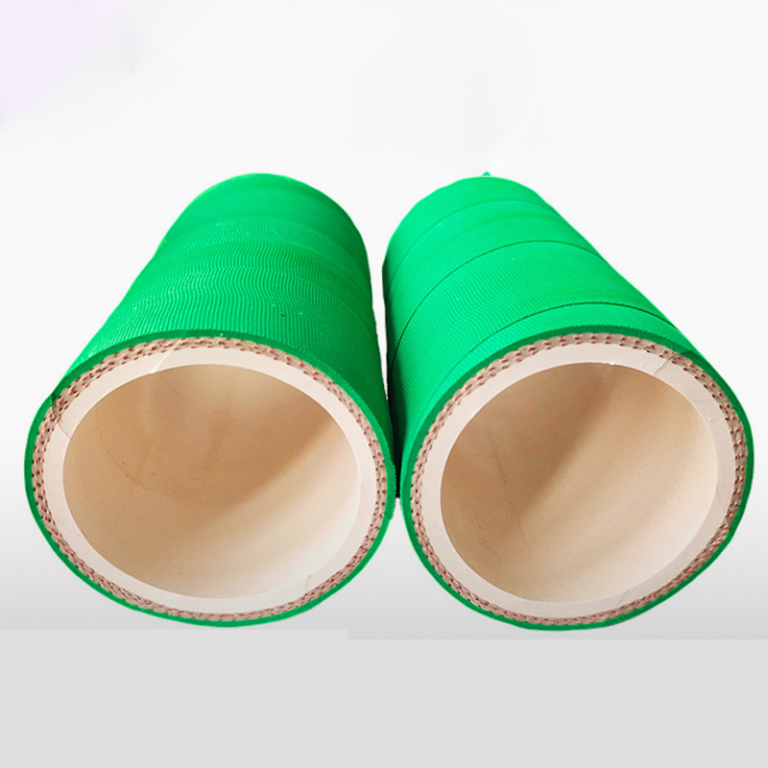Characteristics of loading and unloading hoses for chemical terminals
Chemical terminal loading and unloading composite hose is a hose specially designed for chemical transportation, used for safe and efficient transportation of various chemicals. This type of hose combines new materials, new processes, and new technologies, demonstrating unique performance and being able to cope with various complex chemical environments and operating conditions.
Structure and Design
The composite hose adopts a multi-layer structure, with each layer having its specific function. The inner layer is usually made of chemically resistant materials, such as polytetrafluoroethylene film, to ensure that chemicals do not corrode the inside of the hose. The reinforcement layer is composed of high-strength synthetic fiber fabric and two layers of spiral metal wires inside and outside, which are usually made of SS316 stainless steel wire, providing strong support and pressure bearing capacity for the hose. The outer layer is made of anti-wear and anti-aging materials to ensure that the hose can still maintain good performance during long-term use.
The composite hose also adopts special sealing technology to ensure that there will be no leakage during transportation. At the same time, its bending radius is small, making it easy to operate in narrow spaces or situations that require frequent bending.
Performance characteristics
1. Corrosion resistance: The inner layer material of the composite hose has excellent corrosion resistance and can resist the erosion of various chemicals. This makes it particularly suitable for transporting chemicals such as acids, bases, salts, organic solvents, etc.
2. High strength and pressure resistance: Due to the use of high-strength synthetic fiber fabric and metal wire reinforcement layer, the composite hose can withstand high pressure without easily breaking. This makes it have excellent performance in high-pressure transmission scenarios.
3. Lightweight and Soft: Compared to traditional rubber or metal hoses, composite hoses are lighter, easier to handle and install. At the same time, its softness is also higher, which can adapt to various curved and twisted conveyor lines.
4. Temperature resistance: Composite hoses can maintain stable performance over a wide temperature range, and can work effectively in both high and low temperature environments.
5. Static electricity dissipation performance: The combination of the inner spiral metal wire and the specially designed inner layer of the composite hose enables the hose to have reliable static electricity dissipation performance, thereby reducing the risk of static sparks generated during transportation.
Application scenarios
Due to its many advantages mentioned above, composite hoses for chemical terminal loading and unloading have been widely used in multiple fields. It is not only used for dock loading and unloading operations, but also commonly used in petrochemical warehouses, tank trucks, chemical plants, and other places to replace traditional rubber or metal hoses. In these occasions, composite hoses can safely and efficiently transport various chemicals, providing strong support for the production and operation of enterprises.





